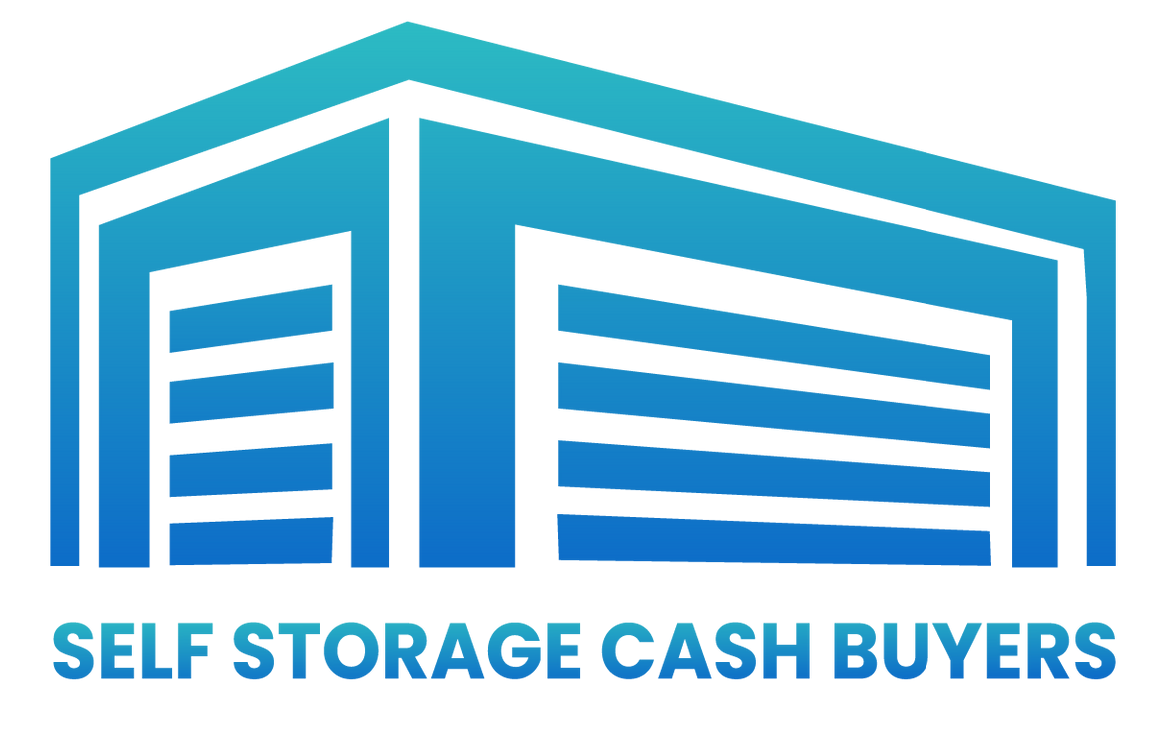Your Guide to Buying a Self-Storage Facility
Published on December 14, 2023
Nick Stevens
AUTHOR
Free Offer Form
As the demand for storage solutions surges across the United States, self-storage facilities have emerged as a lucrative and resilient investment option.
This guide is your compass in this dynamic market, offering advice to help you make informed decisions and seize countless opportunities.
Understanding the nuances of purchasing a self-storage facility will empower you with the knowledge required to embark on this exciting journey.
Self-Storage Industry: What You Need to Know
This section defines the key aspects, trends, and considerations that define this industry.
Growth and Market Trends in the Self-Storage Industry
The self-storage industry is experiencing rapid growth due to urbanization and a transient population.
Self-storage continues to be in high demand due to businesses reducing their workspaces.
Climate-controlled storage units are also popular, especially in extreme weather regions. Green initiatives are also gaining traction.
Financial advisors are drawn to the self-storage sector due to its high potential for income. You can actively invest or go for passive investment.
By informing yourself regarding key insights on market trends, self-storage owners can adapt their strategies and stay competitive in a rapidly evolving industry.
Benefits and Risks of Investing in Self-Storage Facilities
Self-storage investing has benefits, risks, and challenges.
Benefits of Investing in Self-Storage Facilities
Here are a few of the benefits of investing in a storage facility.
Steady Income Stream
Self-storage spaces provide a reliable income stream, resistant to economic downturns. Self-storage investments offer low risk due to high-profit margins and continuous demand.
A self-storage business has a typical profit margin of around 41%, according to IBISWorld.
Low Operational Overhead
Affordable storage spaces are more profitable than other real estate investments due to lower operational costs and minimal management and utility expenses.
Diverse Customer Base
Self-storage facilities maintain occupancy rates and revenue stability by serving individuals, businesses, and students.
Scalability
Investors can start with an existing self-storage facility and expand their portfolio over time. This scalability allows for gradual growth and diversification of their initial self-storage investment.
Flexibility in Unit Sizes
Facilities can adjust storage unit sizes to meet changing needs and maximize revenue potential.
Risks of Investing in Self-Storage Facilities
Here are some risks involved in self-storage investing.
Market Saturation
In oversaturated markets, self-storage faces more competition and lower rental rates. Proper self-storage market analysis is crucial to avoid costly self-storage investment.
Economic Downturns
Economic downturns can cause self-storage occupancy rates and rental income to drop due to canceled or downsized contracts.
Location Sensitivity
The location of a facility is crucial. Facilities in high-traffic, easily accessible areas tend to perform better.
Determine the pricing and prepare your business model. You'll face different obstacles depending on your business model, financial circumstances, and location.
Maintenance Costs
Maintenance and upkeep of the facility can be costly, especially for older properties. Neglecting maintenance can lead to further property deterioration and decreased value.
How to Buy a Self-Storage Facility
In this section, we'll cover the strategic, financial, and operational considerations defining successful self-storage ownership.
Assessing Your Financial Situation and Goals
To make informed financial decisions in the self-storage market, assess your financial readiness and investment goals, and develop a clear financial strategy.
Determine your available capital and financing options, and define your investment goals. If you currently lack funds, consider financing options.
Conduct a thorough market study to understand the industry, and create detailed financial projections.
Assess the financial risks, calculate expected ROI, and plan an exit strategy as needed. Set aside a reserve fund for emergencies.
You may also wish to consult financial advisors, real estate experts, and legal professionals before making important financial decisions.
Identifying the Right Location for Your Self-Storage Facility
Analyzing financial statements, cash flow, and tax returns is crucial in valuing self-storage properties. Here's a general overview of what you should consider when buying a facility.
Location
Choose a location for your facility that's easily accessible to your target market, like near the city center or areas with plenty of businesses and major highways to attract target customers.
Demographics
Analyze demographics to determine storage unit demand and the appropriate storage unit sizes. For example, apartments will typically need small storage units.
Zoning and Regulations
Check local zoning regulations and permits. Some areas may restrict facilities, and you must comply with all local laws.
Property Condition
If you're purchasing an existing facility, evaluate the property for structural issues, maintenance needs, and security upgrades. Renovating an existing facility can save money compared to building from scratch.
Evaluating Existing Self-Storage Facilities for Sale
When buying a facility, it is crucial to conduct a thorough evaluation.
Physical inspections should cover every square foot of the potential property.
They should also assess the condition, security features, storage unit mix and amenities, lease agreements, tenant profiles, regulatory compliance, operational efficiency, and expansion potential.
Legal and environmental due diligence process should be conducted to ensure the property is in good standing. We also recommend contacting a professional to appraise the facility to determine its fair market value.
Financing Options for Buying a Self-Storage Facility
Are you looking to finance a facility? Check out these common financing options.
- Traditional Bank Loans:
- Commercial Mortgages: Banks offer commercial real estate loans with flexible terms and interest rates from 5-30 years to cover the property's purchase price.
- SBA Loans:
- SBA 7(a) Loans: SBA loans like the SBA 7(a) loan provide attractive options for self-storage purchases with competitive rates and longer repayment terms.
- Seller Financing:
- Seller Carry Back Financing: The business owner may finance part of the purchase price, offering flexible and negotiable terms through a second mortgage or direct loan to the buyer.
- Private Investors or Partnerships:
- Equity Investment: Consider partnering with private investors to invest in your storage unit. They can contribute capital or assets in exchange for shared ownership and profits.
- Real Estate Investment Trusts (REITs):
- REIT Investment: Self storage REIT offers an alternative to direct ownership, with potential dividend income. Self storage REITs manage and own self storage buildings, generating profits by renting storage spaces to individuals and businesses.
- Bridge Loans:
- Bridge Financing: Bridge loans are short-term financing for self-storage space acquisition or renovation with higher interest rates, enabling quick property securement and refinancing.
- Portfolio Loans:
- Portfolio Lenders: Portfolio loans are available for unique real estate needs.
- Crowdfunding:
- Real Estate Crowdfunding: Invest in real estate projects through crowdfunding. Professionals can manage the project, and returns are based on your investment amount.
Due Diligence and Legal Considerations in the Buying Process
Before buying a facility, consider the following factors.
Property Inspection
Thoroughly inspect every inch of the facility for structural issues, maintenance needs, and safety concerns. Consider hiring a professional inspector if necessary.
Financial Due Diligence
Review financial records, verify revenue, analyze monthly rent costs and tenant leases, and examine occupancy rates and trends to assess the facility's performance.
This research can help you turn your storage space into a lucrative business in no time.
Market Research
Research the local market to understand demand, competition, and growth potential for self-storage in the area.
Evaluate the location and accessibility to potential customers. Purchasing a facility with this information in hand can help you create a positive cash flow.
Legal and Regulatory Compliance
Ensure the facility follows local zoning regulations, has the necessary permits and licenses, and has no standing legal disputes or legal violations.
Environmental Assessment
Perform an environmental assessment to spot any environmental hazards or contamination on the property.
Rectifying environmental liabilities after purchasing the facility can be expensive, so it's best to address issues now.
Purchase Agreement
Ensure you work with a real estate lawyer to draft or review the sales agreement. It should outline the sale's terms, including purchase price, contingencies, and timelines.
Title Search
Conduct a title search to confirm ownership and identify any liens, encumbrances, or easements that may affect the property's title.
Environmental Compliance
Ensure compliance with environmental laws and regulations. This may include assessing any environmental impact studies and obtaining necessary permits.
Closing Process
This involves the transfer of ownership and the exchange of funds. You may need an attorney to guide you through this process, which includes signing legal documents and making payments.
Insurance
Obtain appropriate insurance coverage for the property, including liability insurance and coverage for potential property damage.
Setting Up and Managing Your Self-Storage Facility
Now let's cover the best ways to manage your facility to corner the storage market.
Facility Design and Layout Considerations
Design an efficient facility layout to boost your self-storage business. Optimize how you use your storage space, and enhance the facility's security to improve the customer and tenant experience.
Here are some key factors to consider whether you're dealing with an existing facility or preparing a new construction site for your self storage business.
Site Selection
Choose an accessible location for your facility near residential areas, businesses, and major highways.
Unit Mix and Size
Based on market demand, decide on storage unit types and sizes. It's best to incorporate a variety of storage unit sizes, from small lockers to large self-storage units for furniture and potential vehicle storage.
Vehicle storage facilities provide a secure, sheltered parking spot for customers with cars, boats, or RVs. Vehicle storage facilities often provide temperature-controlled units to preserve classic cars.
Some customers may require a diverse mix of self-storage units, so adjust according to market demand.
Building Design
Choose a self-storage design based on your budget, the facility's location, and customer preference. Options include single/multi-story drive-up units or interior access.
Drive-up storage and outdoor storage facilities require minimal maintenance.
You could also add valet storage to better cater to customers.
Security Features
Storage centers can enhance their security measures by implementing surveillance cameras and electronic gates. It's also vital to hire security personnel to ensure the goods and property are monitored.
Secure the facility by investing in measures like a surveillance system and good lighting. Consider extra security measures for climate-controlled storage units.
Climate-Controlled Units
Consider implementing proper climate control features for storage units containing climate-sensitive possessions.
To store items like electronics, artwork, and documents, the facility must have proper insulation, HVAC systems, and humidity control for climate-controlled units.
Many storage facilities combine different services, resulting in mixed-use storage facilities. Mixed-use storage facilities in the self-storage industry cater to diverse customer needs by combining different services.

Security and Safety Measures for Your Self-Storage Facility
You may want to consider enhancing your storage unit's safety for peace of mind and to lower the risk of theft or damage to business equipment at your facility.
Access Control System
Install an access control system to limit entry only to authorized individuals. Use keypads or card access gates that require a unique code or card to enter the facility.
Surveillance Cameras
Deploy a comprehensive surveillance camera system to monitor all critical areas of the facility, including entrances, hallways, and the perimeter.
High-definition cameras with recording capabilities can prevent theft and provide valuable evidence in case of incidents.
Fencing and Gated Entry
Install sturdy fencing around the facility's perimeter and incorporate a gated entry system. Fencing acts as a physical barrier, while a gate with access control adds an extra layer of security.
Alarms and Sensors
Consider installing intruder alarms on storage units and buildings. These alarms can detect unauthorized access and alert property managers or security personnel.
Marketing and Promoting Your Self-Storage Facility
Marketing and promoting your self-storage business is essential for success. Follow these quick marketing tips to stand out in a competitive market.
- Develop a Strong Online Presence
- Website: Create a professional, user-friendly website with essential information about your facility, like how many units you offer, pricing, location, and contact details.
- Online Booking: Offer online booking and reservation options to make it convenient for potential tenants to secure storage units.
- Utilize Online Advertising
- Social Media Marketing: Create and maintain engaged social media profiles on networks like Facebook, Twitter, and Instagram. Share engaging content, promote special offers, and engage with your audience.
- Online Directories: List your new facility on directories and review sites like Google Business Profile, Yelp, and Yellow Pages.
- Content Marketing
- Blogging: Maintain a blog on your website to provide valuable content related to self-storage, moving tips, organization ideas, and more. This can help establish your facility as an authoritative resource.
- Email Marketing: Create an email list of possible and existing tenants. Send regular newsletters with updates, promotions, and useful information.
- Local Marketing
- Local SEO: Optimize your site for local tracking by including location-based keywords in your content. Register your facility on Google Maps and ensure your business information is accurate.
- Community Engagement: Participate in local events, sponsor community activities, and engage with local businesses to build relationships and increase brand visibility.
Hiring and Training Staff for Your Self-Storage Facility
Staffing is crucial for a successful facility. To ensure success, assess the facility's staffing needs, identify key job positions, and develop a comprehensive training program.
This should cover facility policies, customer service standards, security protocols, safety guidelines, and the use of facility management software.
Employees should be regularly retrained and updated to keep staff informed of the best practices. Emphasize excellent customer service, security and safety, facility management, and technology and software training.

Frequently Asked Questions
Learn more about purchasing and investing in a self-storage business here.
What Is the Average Cost of Buying a Self-Storage Facility?
Single-story construction costs range from $25-$42 per square foot, while multi-story facility construction costs may be between $45-$75 per square foot, excluding land or site improvement costs.
Some of the other costs involved in building a storage facility include land acquisition, construction budget, labor, permits, and ongoing self-storage operating expenses like real estate taxes, security, and maintenance.
How Much Profit Can I Expect From a Self-Storage Facility?
Before entering the world of self-storage investing, analyze the market and assess the potential return on your investment to see if it's worth it.
The average profit margin in this business is 41%. Storage facilities can generate a net operating income (NOI) that ranges from 30%-50% of gross revenue.
You should conduct a cash flow analysis that examines the net operating income.
What Are the Common Challenges in Managing a Self-Storage Facility?
Common challenges in managing a facility include:
- High turnover rates can increase marketing and administrative costs.
- Stiff competition from other area self-storage businesses can affect occupancy and rental rates.
- Maintenance and repairs to keep the storage unit in excellent condition.
- Ensuring the security of tenants' belongings and the storage unit, including preventing break-ins and theft.
- Navigating local zoning regulations and compliance requirements.
Implementing effective self-storage management solutions can streamline operations and address many common challenges storage unit owners face.
What Are the Legal Requirements for Owning a Self-Storage Facility?
Legal requirements for owning a facility may include the following.
- Zoning and Land Use: Compliance with local zoning regulations ensures that self-storage is permitted in the chosen location.
- Permits and Licenses: Getting the required permits and licenses for operating a self-storage business, including building and self-storage business licenses.
- Lease Agreements: Drafting lease agreements that outline terms and conditions for tenant use of storage units.
- Tenant Privacy: Complying with tenant privacy laws and personal information protection.
- Insurance: Securing appropriate insurance coverage for liability and property protection.
How Can I Find Self-Storage Facilities for Sale in My Area?
Work with local real estate agents to find self-storage buildings for sale and explore online listings.
If you have contacts in the industry already, contact property owners directly and monitor real estate auctions for potential off-market opportunities.
Conclusion
Before entering the self-storage industry, it's important to conduct thorough market research and understand the ins and outs of your local market, target audience, and the potential costs involved.
This information will ensure you can turn your storage facility around and make a profit quickly.
The self-storage sector presents many opportunities, and your readiness to seize them is the key to unlocking a prosperous future in real estate investment.


